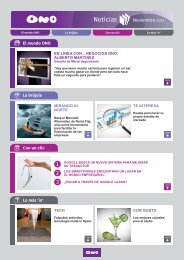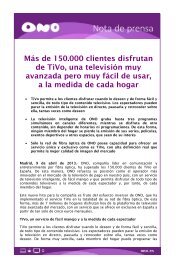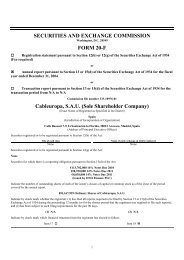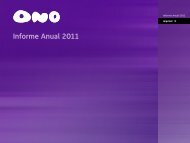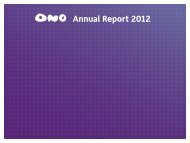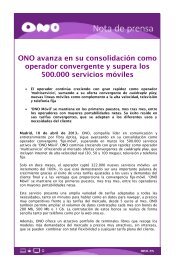USER'S GUIDE - Ono
USER'S GUIDE - Ono
USER'S GUIDE - Ono
You also want an ePaper? Increase the reach of your titles
YUMPU automatically turns print PDFs into web optimized ePapers that Google loves.
2<br />
25<br />
CABLE<br />
This chapter describes the screens that display when you click Cable in the toolbar.<br />
2.1 CABLE OVERVIEW<br />
This section describes some of the concepts related to the Cable screens.<br />
2.1.1 DOCSIS<br />
The Data Over Cable Service Interface Specification (DOCSIS) is a<br />
telecommunications standard that defines the provision of data services) Internet<br />
access) over a traditional cable TV (CATV) network.<br />
Your CDE-30364 supports DOCSIS version 3.0.<br />
2.1.2 IP ADDRESSES AND SUBNETS<br />
Every computer on the Internet must have a unique Internet Protocol (IP) address.<br />
The IP address works much like a street address, in that it identifies a specific<br />
location to which information is transmitted. No two computers on a network can have<br />
the same IP address.<br />
2.1.2.1 IP ADDRESS FORMAT<br />
IP addresses consist of four octets (8-bit numerical values) and are usually<br />
represented in decimal notation, for example 192.168.1.1. In decimal notation, this<br />
means that each octet has a minimum value of 0 and a maximum value of 255.<br />
An IP address carries two basic pieces of information: the “network number” (the<br />
address of the network as a whole, analogous to a street name) and the “host ID”<br />
(analogous to a house number) which identifies the specific computer (or other<br />
network device).<br />
2.1.2.2 IP ADDRESS ASSIGNMENT<br />
IP addresses can come from three places:<br />
The Internet Assigned Numbers Agency (IANA)<br />
CABLE





